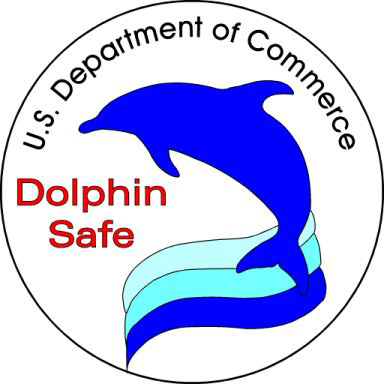More than a year ago, the World Trade Organization (WTO) sided with Mexico and appeared to finally bring to an end a long-running dispute between Mexico and the USA over “dolphin-safe” tuna. The WTO decision confirmed that the methods used by Mexico’s tuna fishing fleet met the highest international standards, not only for protecting dolphins but also for conserving other marine species.
 The USA has now responded by strengthening the rules governing the use of “dolphin safe”, a label first established in 1990. According to Mexican officials, the changes effectively circumvent the WTO decision by establishing two distinct regulatory regimes, one for the Tropical Eastern Pacific Ocean area (where the Mexican tuna fleet operates) and another, much less restrictive, for all other regions.
The USA has now responded by strengthening the rules governing the use of “dolphin safe”, a label first established in 1990. According to Mexican officials, the changes effectively circumvent the WTO decision by establishing two distinct regulatory regimes, one for the Tropical Eastern Pacific Ocean area (where the Mexican tuna fleet operates) and another, much less restrictive, for all other regions.
Mexican officials argue that the second regime, which does not include independent observers, has been unilaterally established by the USA in order to protect its own tuna fleet which uses methods that are not environmentally sound.
Part of the conflict over “dolphin safe” tuna revolved around the very different methods of fishing employed in the two countries. Mexican tuna fishermen use the encirclement method which involves locating tuna by chasing dolphins that swim with the tuna schools. Large purse seine nets are then employed to scoop up the fish. Decades ago, this method did indeed result in many dolphins being caught as bycatch. This led to justifiable outrage from environmentalists and the “dolphin safe” system. It quickly led to Mexico’s fleets employing specially-adapted nets and changes in procedure to ensure that any dolphins accidentally trapped can escape or are released and returned (alive) back to the ocean. According to the best available data, these improvements quickly reduced dolphin bycatch to close to zero.
Most US tuna fishermen, on the other hand, rely on either long-line fishing, in which every species hooked is killed, or employ fish aggregating devices to encourage the tuna to school. Both methods used by US tuna fisherman kill many immature tuna as well as numerous other species, including sharks and marine turtles (especially the critically endangered Pacific leatherback turtles), as well as seabirds (especially albatrosses and petrels).
The WTO agrees with Mexico that the method used by its tuna fleet is the most sustainable of those permitted by the International Dolphin Protection Program, and protects not only dolphins but also avoids the bycatch of juvenile tuna, ensuring the long-term viability of the tuna fishing industry.
The WTO resolution appeared to finally end this acrimonious dispute which had begun thirty years ago and included a US embargo against Mexican tuna which lasted for more than a decade. It meant that Mexico’s tuna fishermen could legally stamp “dolphin-safe” on their exports to the USA, the world’s largest tuna importer, certifying that the tuna had been caught in full compliance with the International Dolphin Protection Program. The revised US rules mean that most Mexican-caught tuna will still not qualify for the “dolphin safe” label.
Mexico’s tuna catch (mainly yellowfin tuna) peaked at 166,000 tons in 2003 when more than 20,000 tons were exported, mainly to Spain, and has since declined to around 115,000 tons. About 20,000 families in Mexico depend on tuna fishing for their livelihood. This figure includes not only fishermen but also those working in associated processing and packing plants. Mexico’s 130-vessel tuna fleet is the largest in Latin America.
The USA-Mexico tuna war is a classic example of a cross-border fishing/trade dispute. The new US regulations mean that the ball is now firmly back in Mexico’s court. Mexican fishing officials were quick to criticize the new rules, but have not yet announced their next move in this long-running saga which looks set to rumble on for quite some time.
Want to find out more?
Related posts:
One Response to “The Mexico-USA tuna war rumbles on”
Sorry, the comment form is closed at this time.
You have got to be delirious! The U.S. Government has never done anything to benefit the American tuna fleet. In fact the only reason Mexico has those 130 vessels in its fleet is because the U.S. Government and environmentalists made it impossible for the fleet to stay in San Diego and the boats were sold to the Mexicans.
Just the same, if the Mexicans were smart they would export the tuna to the U.S. with or without the bogus and misleading “Dolphin-Safe” label because no one here pays attention to it anyway.